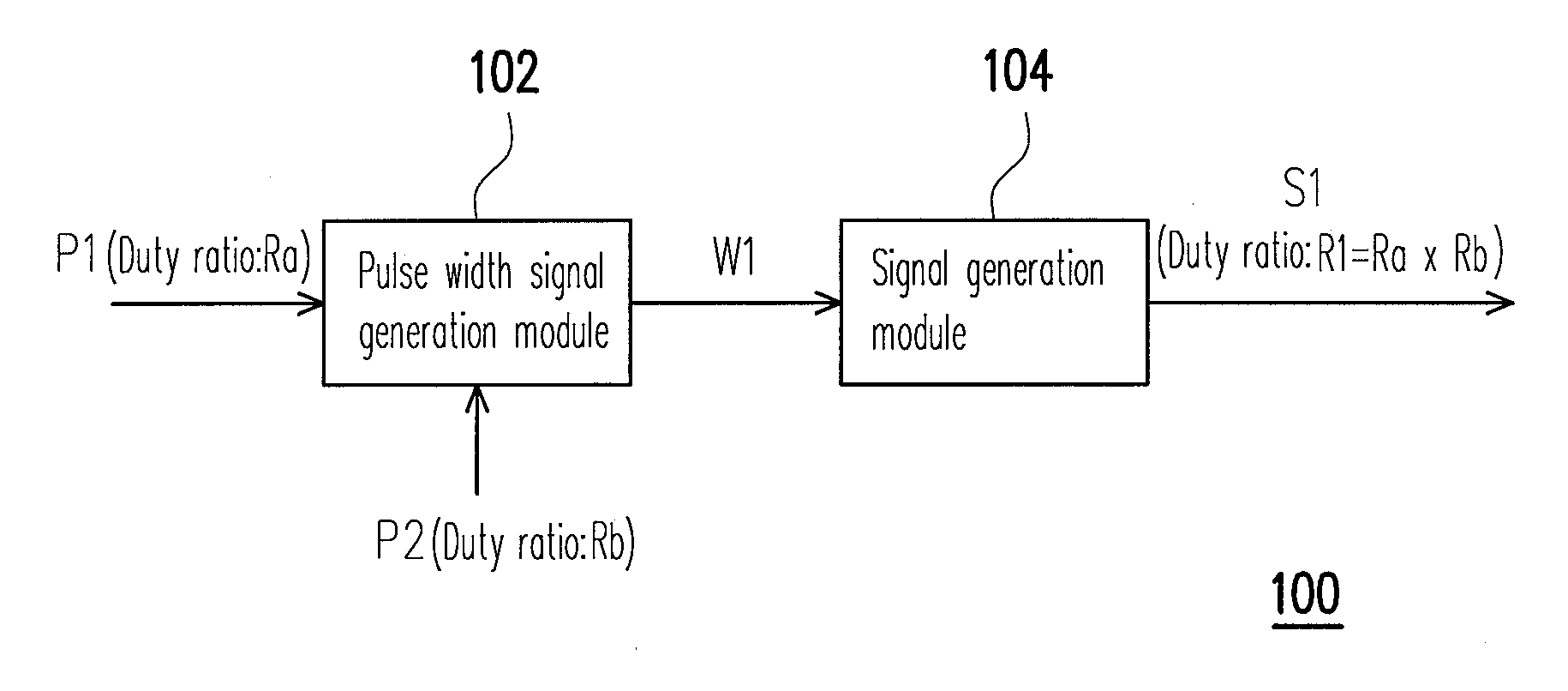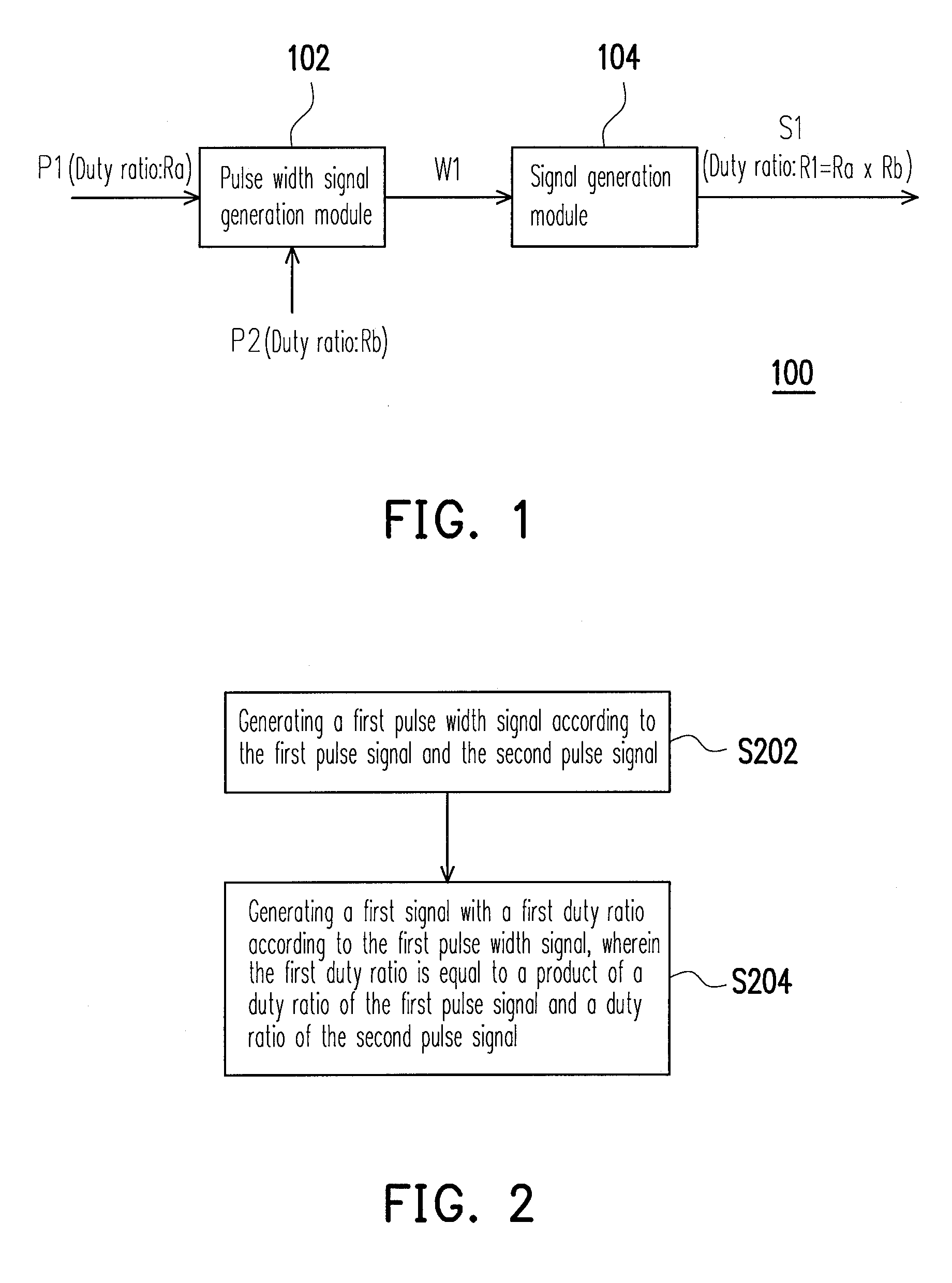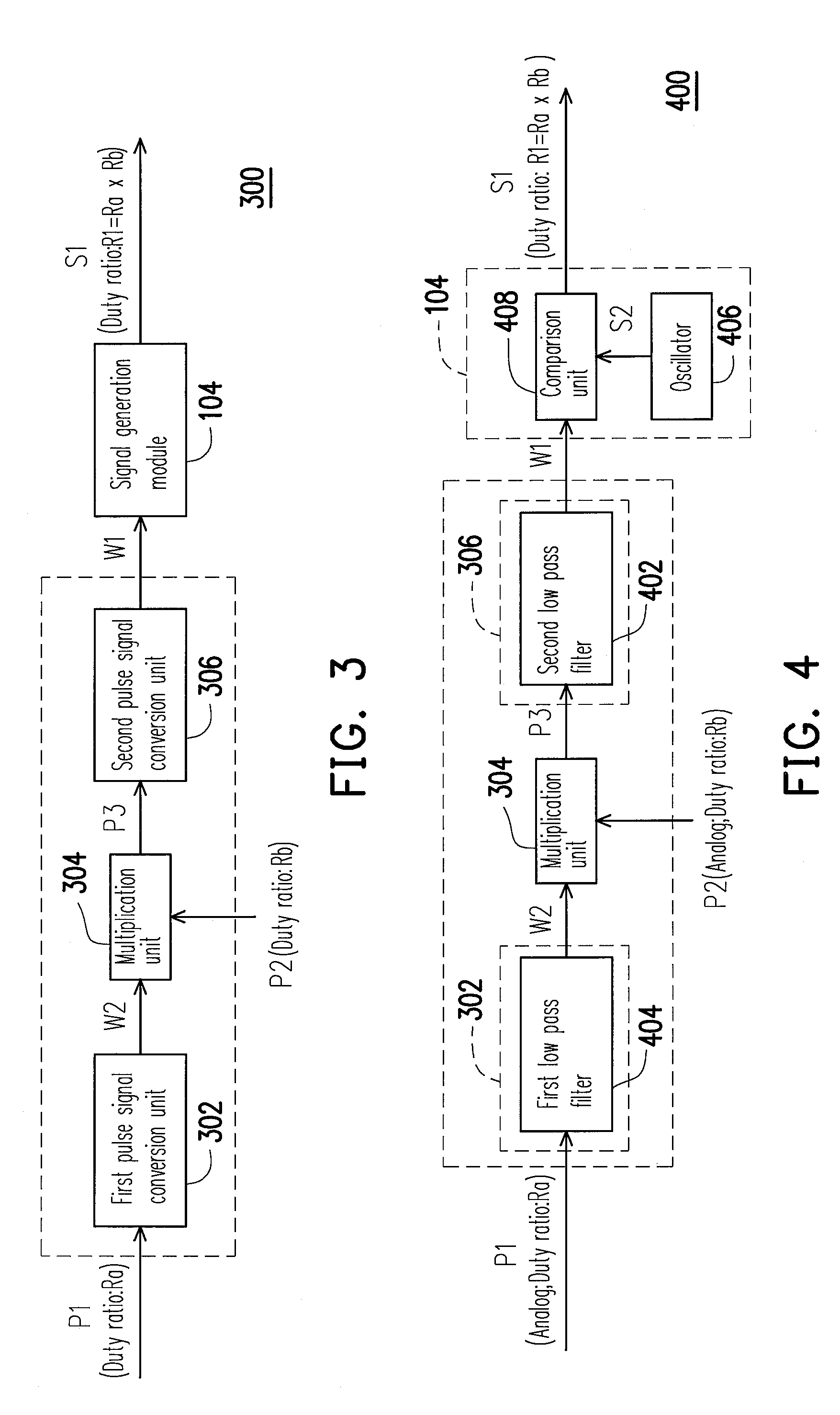Device and method for signal generation
- Summary
- Abstract
- Description
- Claims
- Application Information
AI Technical Summary
Benefits of technology
Problems solved by technology
Method used
Image
Examples
first embodiment
The First Embodiment
[0045]FIG. 1 is a block diagram illustrating a signal generator according to a first embodiment of the present invention. The present invention proposes a signal generator 100, including a pulse width signal generation module 102 and a signal generation module 104. The pulse width signal generation module 102 is coupled to the signal generation module 104. FIG. 2 is a flow chart illustrating a signal generation method according to the first embodiment of the present invention. The signal generation method will be described below referring to both FIG. 1 and FIG. 2.
[0046]First, the pulse width signal generation module 102 generates a first pulse width signal W1 according to a first pulse signal P1 and a second pulse signal P2 (step S202). Then, the signal generation module 104 generates a first signal S1 with a first duty ratio R1 according to the first pulse width signal W1 (step S204), wherein the first duty ratio R1 is equal to a product of a duty ratio Ra of t...
second embodiment
The Second Embodiment
[0047]In the present embodiment, the pulse width signal generation module 102 may include two pulse signal conversion units and a multiplication unit. Referring to FIG. 3, FIG. 3 is a block diagram illustrating a signal generator 300 according to a second embodiment of the present invention. The pulse width signal generation module 102 of the signal generator 300 includes a first pulse signal conversion unit 302, a multiplication unit 304, and a second pulse signal conversion unit 306. The first pulse signal conversion unit 302 is coupled to the multiplication unit 304, and the second pulse signal conversion unit 306 is coupled to the multiplication unit 304 and the signal generation module 104. Wherein, the multiplication unit 304 is an analog mixer.
[0048]In the present embodiment, in the step S202, a process of generating the first pulse width signal W1 may be divided into: first, the first pulse signal conversion unit 302 receives the first pulse signal P1 an...
third embodiment
The Third Embodiment
[0050]FIG. 4 is a block diagram illustrating a signal generator according to a third embodiment of the present invention. Referring to FIG. 4, a difference between the signal generator 400 of the present embodiment and the signal generator 200 of the second embodiment is that the second pulse signal conversion unit 306 includes a first low pass filter 402, and the first pulse signal conversion unit 302 includes a second low pass filter 404. Wherein, the first low pass filter 402 is coupled between the multiplication unit 304 and the signal generation module 104, and the second low pass filter 404 is coupled to the multiplication unit 304. On the other hand, in the present embodiment, the first pulse signal P1 and the second pulse signal P2 are analog signals. The signal generation module 104 includes an oscillator 406 and a comparison unit 408. The comparison unit 408 is coupled to the first low pass filter 402 and the oscillator 406.
[0051]FIGS. 5A-5D are schemat...
PUM
 Login to View More
Login to View More Abstract
Description
Claims
Application Information
 Login to View More
Login to View More - R&D
- Intellectual Property
- Life Sciences
- Materials
- Tech Scout
- Unparalleled Data Quality
- Higher Quality Content
- 60% Fewer Hallucinations
Browse by: Latest US Patents, China's latest patents, Technical Efficacy Thesaurus, Application Domain, Technology Topic, Popular Technical Reports.
© 2025 PatSnap. All rights reserved.Legal|Privacy policy|Modern Slavery Act Transparency Statement|Sitemap|About US| Contact US: help@patsnap.com



